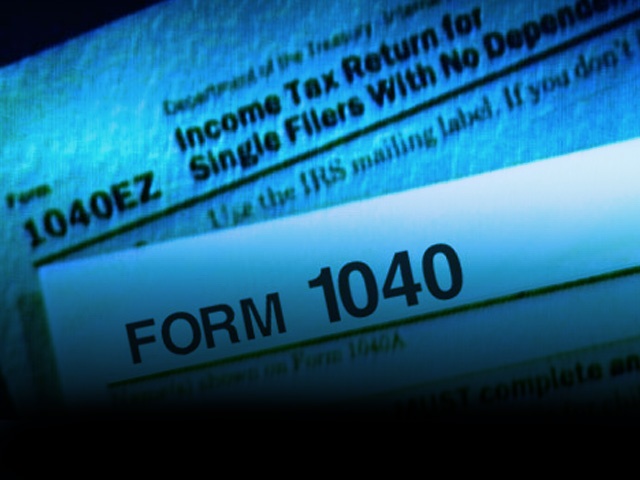Getting the Most out of Itemizing your deductions.
Itemizing deductions is an incredibly easy theory to understand, yet the strategies behind it all can be intricate and countless.
Free Quicken Online automatically categorizes your expenses.
The rule for when to itemize is simple = you do it if the total of your itemized deductions is greater than your standard deduction.
First of all, your tax is based on your “taxable income.” That’s your total income after you’ve subtracted above-the-line deductions like your Individual Retirement Account (IRA) or other qualified retirement-plan contributions, moving expenses or alimony payments, plus your personal exemption and either :
Your standard deduction or, Your itemized deductions.
Your itemized deductions are sometimes referred to as “below-the-line” deductions. (“adjusted gross income” -aka AGI- is “the line.”) Clearly, the more you can deduct, the less in tax you’ll owe.
Here are the standard deductions that apply to 2011 tax returns:
|
Standard deductions for 2011 returns |
|
|
Filing Status |
Amount |
|
Married filing jointly or Qualifying Widow(er) |
$11,600 |
|
Single |
$5,800 |
|
Heads of households |
$8,500 |
|
Married couples filing separately |
$5,800 |
Some taxpayers must itemize, even if their deductions are less than the standard deduction. You must itemize your deductions if:
- You are married, filing separately, and your spouse itemizes.
- You are a U.S. citizen who can exclude income from U.S. possessions.
- You are a nonresident or dual-status alien.
- You file a short-period return because of a change in your accounting period.
- There are eight sections On Schedule A. Seven of which are itemized expenses that you can deduct on your taxes:
Taxes. These include state and local income taxes, property taxes on real estate, intangible taxes (on the value of stocks and bonds you own) and on personal property taxes on such things as cars. In 2007, as in 2006, you could deduct either your state income taxes or your state sales taxes but NOT both. (Congress has not yet decided whether to extend this break for 2008 and beyond.)
Interest expenses. For most people, these are limited to home mortgage interest, points (interest that’s prepaid to buy a home), and some interest on investments and education expenses. For most taxpayers, the mortgage deduction is what lets them itemize. If you take out a 30-year, $140,000 mortgage at 6%, you will generate about $8,350 in deductible interest in the first year.
- See also my Fair Market Value Guide. (recently updated for 2011 filing)
Job & Misc. Expenses
Other Misc. Deductions
Total Deductions
The key, then, is to maximize the value of your itemized deductions. Here’s where planning can put dollars in your pocket. Ask your Tax preparer a list of deductions to see What You Can Itemize.
Dealing with the floors
Some itemized deductions — including medical expenses or miscellaneous deductions such as investment expenses, safe deposit fees, professional education, employee job-hunting expenses and tax-preparation fees — are not allowed until they exceed a certain “floor” amount.
The toughest floor to exceed is medical expenses. No medical expenses are allowed as itemized deductions except for the amount that exceeds 7.5% of your adjusted gross income. That means if you have an adjusted gross income of $100,000, the first $7,500 of your medical expenses doesn’t count. But sometimes, elective medical expenses can be accelerated or even deferred. Orthodontia payments for you or your dependents can often be extended. They always can be accelerated. These expenses are deducted in the year they are paid, not necessarily in the year the service is rendered.
If you can already pass the 7.5% test for allowable expenses or these expenses would put you over the minimum hurdle, you should consider accelerating them. If you lack the cash, consider charging the expenses.
On credit card charges, you are allowed the deduction in the year of the charge, not in the year that the charge is paid off.
Don’t automatically accelerate if it puts you over the 7.5% floor. Remember, your total itemized deductions must exceed your standard deduction before you get any real additional benefit from any of them. Allowable medical expenses are just one component of the package.
If you don’t exceed the 7.5% floor or your total itemized deductions don’t exceed your standard deduction this year, you should consider deferring your payments or any elective medical procedures. You get the use of the money — and any investment returns. In any case, you may be able to use the deductions in the subsequent year when you revisit the itemization question.
The threshold for the itemized deduction for unreimbursed medical expenses is increased from 7.5% of AGI to 10% of AGI for regular income tax purposes. This is effective for tax years beginning after Dec. 31, 2012, except that for 2013, 2014, 2015 and 2016, if either the taxpayer or the taxpayer’s spouse turns 65 before the end of the tax year, the increased threshold does not apply and the threshold remains at 7.5% of AGI.
Miscellaneous itemized expenses are also deductible only after they exceed a minimum floor. In this case, it’s 2% of your adjusted gross income. So, with an adjusted gross income of $100,000, your first $2,000 of miscellaneous itemized deductions won’t count.
But here again, many of these deductions can be either accelerated or deferred. Miscellaneous itemized deductions such as those mentioned above often can be paid in the year of your choice. Many of my clients send my tax-preparation fees to me on Dec. 31 in order to get the deduction in the year the check was mailed. I don’t get the income until I receive the check — in the new year.
The rule here is the same as with medical expenses. First, qualify the expenses to be included in the deductible pot. Then, only if you expect to itemize, accelerate. If not, defer.
Interest and tax payments
Some interest and tax payments can be handled in the same way.
Let’s look at the interest you are paying. Your January payment on your mortgage includes the interest you accrued for December of the previous year.
Example: By making your January 2012 payment on Dec. 31, 2011, you have accelerated a full month’s interest deduction into 2011.
In the 25% bracket for 2011 on a $1,000 interest payment, that saves you an immediate $250 on April 17, 2012. By doing that each year, you have created an interest-free loan of that $250 in perpetuity or at least until the loan is paid off.
Unfortunately, you can’t prepay two or three months in advance because the interest deduction must relate to the year the money was used. But your Dec. 31, 2011 payment will be for the use of the money during December 2011 .
You can accelerate some tax payments as well. If you don’t pay your real-estate tax in your mortgage, you have the opportunity to accelerate your real-estate tax payments. I am billed in the 4th quarter of my real-estate taxes January of the following year. But I actually make my payment on Dec. 31 of the previous year. The technique is the same with estimated state income tax payments. I make my estimated state income tax payment, due in January in December.
Any voluntary expenditure can be accelerated or deferred. Your gifts to charity are the best example. Whether your $1,000 pledge to your church or synagogue is sent on Dec. 31, 2011 or Jan. 1, 2012 makes little difference to the charity receiving the money. However, in the 25% bracket for 2011, it can make a $250 difference to your tax bill — but again, only if your total itemized deductions exceed your standard deduction.
Personally, if I can qualify for itemizing my taxes, I want to accelerate my tax savings.
And my favorite quotes fits here:
“Not everything that counts can be counted, and not everything that can be counted counts”. – Albert Einstein
Always research the Itemized deduction…. The IRS boast regularly that it makes billions from people who could have itemized and didn’t.









